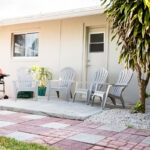Recovery from substance use disorder is a deeply personal journey, especially for women who often face unique challenges related to trauma, family responsibilities, societal pressures, and co-occurring mental health issues. While treatment programs provide the foundation, long-term sobriety requires consistency, support, and stability. One of the most effective tools in achieving this is a structured environment.
Creating a structured environment for women in recovery promotes accountability, emotional safety, and the development of healthy habits. It also supports long-term healing by addressing the full spectrum of needs—emotional, psychological, physical, and practical—that women encounter during recovery.
Why Structure Is So Important in Women’s Recovery
Structure provides predictability and routine, which are critical for individuals recovering from addiction. After the chaos of substance use, a structured environment offers a sense of control and stability. This is especially important for women, who may be juggling multiple roles and responsibilities.
Structure also helps in:
- Reducing anxiety and decision fatigue
- Establishing healthy routines
- Reinforcing accountability
- Creating a sense of purpose
- Minimizing exposure to triggers and relapse risks
For women, a structured recovery environment often extends beyond sobriety—it supports personal empowerment, rebuilding relationships, and creating a sustainable, fulfilling life.
Core Components of a Structured Environment
A well-designed environment for women in recovery includes several essential components that work together to create consistency, safety, and growth.
Daily Routines
Setting consistent wake-up times, meal schedules, therapy sessions, and recreational activities helps create balance. A predictable schedule encourages productivity and reduces idle time, which is often when triggers and cravings emerge.
Routine builds confidence as women begin to follow through on commitments, manage time, and see progress over time. It also helps reset internal rhythms and restore a sense of normalcy.
House Rules and Expectations
Clear boundaries and expectations—like curfews, substance testing, assigned chores, and meeting attendance—help women stay accountable. These rules support emotional safety and reinforce respect for the recovery community.
By following structured rules, women gain experience setting boundaries, honoring commitments, and taking personal responsibility—skills that are vital for long-term recovery and independent living.
Supportive Peer Community
A structured environment is most effective when it fosters connection. Women often thrive in emotionally supportive communities that prioritize empathy, trust, and shared growth.
Peer relationships in sober living or treatment settings allow women to:
- Share common struggles and triumphs
- Practice communication and conflict resolution
- Offer and receive encouragement
- Rebuild self-worth through mutual support
This peer network becomes a foundation for connection that can last well beyond treatment.
Access to Therapy and Counseling
Incorporating consistent access to individual and group therapy ensures that emotional needs are being met. Women in recovery often deal with co-occurring issues such as anxiety, depression, PTSD, or eating disorders.
Therapeutic structure includes:
- Weekly counseling sessions
- Trauma-informed group therapy
- Cognitive-behavioral or dialectical behavior therapy
- Family or parenting therapy when applicable
Ongoing mental health care within a structured setting allows for deeper healing and helps prevent emotional issues from derailing recovery.
Life Skills Development
Many women enter recovery without experience managing finances, maintaining housing, applying for jobs, or balancing parenting responsibilities. A structured recovery environment provides practical support for reentering daily life with stability.
Life skills programs might include:
- Budgeting and financial literacy
- Cooking and meal planning
- Job readiness and resume-building workshops
- Time management strategies
- Self-care and wellness planning
By learning these skills in a supportive environment, women build the confidence needed to maintain independence and sobriety.
Addressing Gender-Specific Needs
A successful structured environment for women must be designed with gender-specific issues in mind. Women in recovery often face distinct barriers and stressors, including:
- Trauma history, including physical or sexual abuse
- Childcare responsibilities or custody concerns
- Pressure to fulfill caregiving roles
- Higher risk of depression and anxiety
- Stigma related to substance use and motherhood
Programs that acknowledge and directly address these challenges provide a more compassionate and effective structure. This might include parenting support, trauma-informed care, women’s empowerment groups, and flexible schedules to accommodate family needs.
Creating a Safe Emotional Space
Structure isn’t just about rules—it’s also about emotional containment. A safe emotional environment ensures that women feel secure, seen, and supported as they confront deep-seated pain and vulnerability in recovery.
Key aspects of a safe emotional space include:
- Nonjudgmental staff and peers
- Opportunities for open expression and reflection
- Boundaries that protect against gossip, bullying, or emotional harm
- Emotional literacy training to help women process feelings constructively
This type of safety fosters trust, which is essential for healing trauma and building resilience.
Role of Accountability in Structure
Accountability is a cornerstone of recovery. Structured environments build in accountability systems to help women stay on track and take ownership of their recovery journey.
Examples include:
- Regular check-ins with staff or mentors
- Goal tracking and progress journals
- Sobriety milestones and reward systems
- Peer accountability partnerships
These tools support personal growth while also reinforcing that actions have consequences—a concept that often needs to be relearned in early recovery.
Spiritual and Creative Structure
Holistic recovery includes addressing spiritual and creative aspects of life. Structured environments often include opportunities for women to reconnect with themselves through:
- Mindfulness and meditation practices
- Yoga and movement therapy
- Art or music therapy
- Journaling or expressive writing workshops
These structured creative outlets allow for emotional release, stress reduction, and the rediscovery of identity outside of addiction.
Supporting Transition and Long-Term Success
A structured environment for women in early recovery must also prepare them for life after treatment. This means gradually building more independence into the structure over time while continuing to offer support.
Transitional programming may include:
- Part-time or full-time work or volunteer placement
- Continued outpatient therapy or coaching
- Alumni support groups
- Help securing housing or transportation
- Financial planning and goal setting
As women transition to independent living, the structured support they’ve developed becomes a scaffold for self-reliance and long-term success.
Common Pitfalls When Structure Is Lacking
Without structure, recovery becomes significantly more difficult. Lack of structure can lead to:
- Poor time management and disorganization
- Increased exposure to relapse triggers
- Emotional instability and impulsivity
- Isolation and depression
- Decreased motivation
For women dealing with trauma, family issues, or mental health concerns, these risks are even higher. That’s why maintaining structure—even as independence increases—is key to long-term stability.
How Loved Ones Can Support Structured Recovery
Family and friends can play a vital role in supporting a structured environment by:
- Encouraging consistency with schedules, meetings, and responsibilities
- Respecting boundaries and the recovery process
- Offering emotional support without enabling unhealthy behaviors
- Participating in family counseling or educational workshops
Understanding the value of structure helps loved ones provide the kind of support that sustains healing rather than undermines it.
Conclusion
Creating a structured environment for women in recovery isn’t just about rules and routines—it’s about establishing safety, consistency, and empowerment during a vulnerable time. Structure helps rebuild lives by offering predictable support, emotional safety, and practical tools that promote healing and independence. For many women, this environment becomes the launchpad for long-term recovery, personal growth, and rediscovery of purpose and strength.
By integrating daily routines, accountability, therapy, life skills, and emotional support, a structured recovery space honors the unique challenges women face and equips them to overcome them with confidence. When women are given the right structure, they are empowered to not only recover—but to thrive. Call us today at 833-285-1315.













